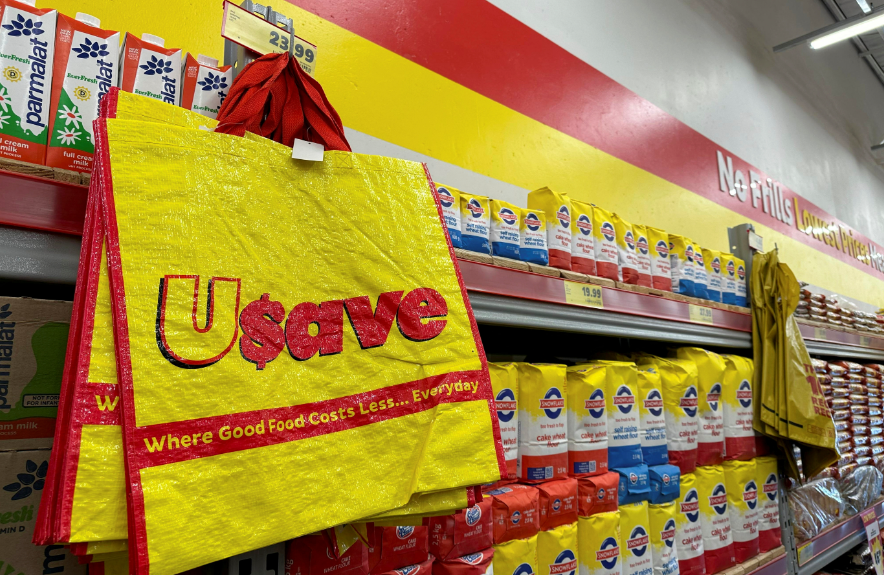Business
Discount Retailers on the Rise in South Africa: How USave and Boxer Are Capturing the Market

As South Africans continue to grapple with economic challenges, the appetite for discount retailers such as USave and Boxer has grown significantly. Consumers are shifting to cost-effective shopping solutions, a trend highlighted in the latest 2024 State of Grocery Retail in South Africa report by McKinsey & Company. The report shows that discount grocery retailers are not only meeting this demand but are also growing faster than the general grocery market.
Key Trends Driving South Africa’s Discount Retail Market
McKinsey’s findings reveal that South African consumers are increasingly focused on affordability. The average monthly household food basket now costs R5,336, marking a 6% rise compared to 2023. Meanwhile, disposable income has grown by only 4% to 5%, pushing consumers to become more price-sensitive and value-conscious.
This cost-conscious mindset is evident in shopper behavior:
- Promotions: About 76% of shoppers now prioritize buying items on promotion.
- Store Brands: Roughly 63% of shoppers are switching to store brands as a budget-friendly choice.
“Discount retail is booming in South Africa, as consumers demand cost-effective options,” noted McKinsey, underscoring how the market is reshaping itself to cater to budget-savvy shoppers.
The Rise of USave and Boxer
McKinsey’s report shows that discount retailers are experiencing growth at twice the rate of the total grocery market. Pick n Pay’s Boxer and Shoprite’s USave brands are leading this charge, with Boxer and USave achieving a combined compound annual growth rate (CAGR) of 12% from 2019 to 2023, double the market average of 6%.
Boxer’s Ambitious Growth Plans
Boxer, part of Pick n Pay, has become a significant force in the discount segment, posting nearly 20% sales growth for the second half of its financial year ending February 2024. The brand grew by another 12% through August 2024, proving its strong market appeal. To further capitalize on this momentum, Pick n Pay plans to list Boxer on the Johannesburg Stock Exchange by year-end, expecting to raise up to R8 billion.
“We are excited to see Boxer thrive as a listed entity,” said Pick n Pay CEO Sean Summers, who announced plans to open an additional 200 Boxer stores by 2026, bringing the total to 700 stores.
USave: A Leader in Low-Income Communities
Shoprite’s USave has seen a similar upswing, reporting a 13.2% increase in sales for the fiscal year ending June 2024. Despite having the lowest inflation rate among Shoprite’s grocery brands, USave’s sales continue to outpace other divisions. Shoprite CEO Pieter Engelbrecht praised USave’s unique role in low-income communities, stating, “Usave’s performance validates our approach of focusing on community-centric retail.”
With plans to grow its network to 1,000 stores within five years, Shoprite is gearing up to strengthen its reach among South Africa’s low-income shoppers.
More Players Eye the Discount Grocery Segment
With the success of Boxer and USave, other retailers are eyeing opportunities in the discount segment. SPAR Group, for instance, has announced intentions to enter this space, anticipating strong growth in the years ahead.
According to McKinsey, discount stores account for just under 9% of the South African market share, a relatively low figure compared to the Netherlands and the United Kingdom, where discount stores have around 15% penetration. With room for growth, the report suggests that South Africa’s discount market will continue expanding, fueled by consumer demand for low-cost options.
South Africa’s Discount Retail Outlook
In summary, South Africa’s discount retail segment is on a rapid growth path, thanks to cost-conscious consumer behavior and lower market penetration. As brands like Boxer and USave continue to outperform traditional retailers, the discount retail model is expected to remain a key component of South Africa’s grocery landscape, meeting the evolving needs of price-sensitive shoppers.















